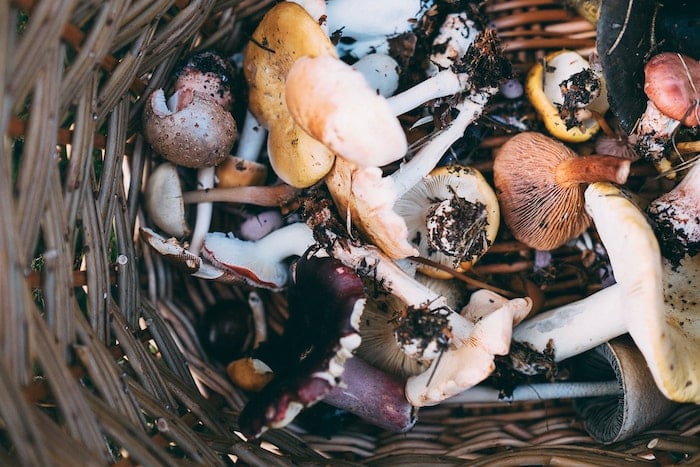
The Taxonomy of Magic Mushrooms
To understand the taxonomy of magic mushrooms, it’s import to understand how mushrooms themselves are classified by mycologists, so it’s time to flash back to high school science class, to upgrade your mushroom knowledge. Part of the reason this is important is that while many people refer to the different types of magic mushrooms as strains, similar to cannabis, the correct terminology is to refer to the different types of mushrooms as species and subspecies. Understanding mushroom taxonomy should help you use the correct terminology.
Table of Contents
What Is A Taxonomy?
First things first? What in god’s name is a taxonomy?
In biology, the scientific study of life, a ‘taxonomy’ refers to the naming convention for all species of life found in nature. What, scientifically speaking, separates humans from fish? Or plants? All of these natural states of being have been classified into a specific set of characteristics that are common amongst different groups. Some of those groups are defined very broadly (Kingdoms, for example, consider all Plants to belong to the same group), and some, very narrowly (where for example, the Genus Homo refers to all species of ape that stood erect, including us).
The order of taxonomy used in biology, from most broad to most narrow, is:
- Domain
- Kingdom
- Phylum/division
- Class
- Order
- Family
- Genus, and
- Species
Order

All mushrooms belong to the Fungi Kingdom, so the taxonomy of magic mushrooms really starts at the “Order” level, as it is the last common grouping of psilocybin mushrooms before they splinter off into their different families. Psilocybin mushrooms are grouped together in the ‘Agaricales’ Order, defined as mushrooms with gills, giving psilocybin shrooms over 13,000 cousins.
Family
Psilocybin mushrooms are classified into a number of families including
Bolbitiaceae: the ‘Panaeolus Cyanescens‘ belongs in this Family
Strophariaceae: the ‘Psilocybe Yungensis‘ belongs in this Family
Inocybaceae: the ‘Inocybe Aeruginascens‘ belongs in this Family
Incertae sedis: the ‘Panaeolus‘ belongs in this Family
Pluteaceae: the ‘Pluteus Salicinus‘ belongs in this Family
Hymenogastraceae: There are more psychoactive species in this Family then any other, including perhaps the most well-known species, the Psilocybe cubensis.
Genus
An important thing to take away from the magic mushroom taxonomy classification is understanding the naming conventions of organisms, which involves the Genus and Species level. In binomial nomenclature (hello Grade 11 biology), the Genus name forms the first part (‘Psilocybe’, for example) and the Species is the second (‘Cubensis’).
Genera containing psilocybin mushrooms include:
- Gymnopilus: part of Strophariaceae, there are around 200 mushrooms in this Genus, 14 of which contain psilocybin.
- Inocybe: 7 of these mushrooms contain psilocybin, though they are unsafe for human consumption.
- Panaeolus: 13 of these mushrooms contain psilocybin, and scientists believe there may be many more.
- Pholiotina
- Pluteus
- Psilocybe: This is the jackpot, as Genera go, for psilocybin, as nearly every species belonging here has at least some kind of psychedelic compound.
Related Articles
Learn more about Psilocybin on Frshminds:
- Considering a retreat? Check out Frshminds’ Ultimate Psilocybin Retreat Center Guide.
- What Kind of a Drug is Psilocybin? What Will It Do To Me?
- How Long Does Psilocybin Stay in Your System?
- Don’t Miss the Best Psilocybin Retreats in Amsterdam
- How To Properly Store Magic Mushrooms
- Why Are There Psilocybin Retreats In Mexico?
- Want To Go To A Magic Mushroom Retreat in Jamaica?
- 3 Top-Rated Psilocybin Retreats in Costa Rica
- The Best Psilocybin Retreats: What To Look For
- Psilocybin Retreats in the Netherlands
Species
When people talk about different types of magic mushrooms, they are usually talking about species like Psilocybe Cubensis (notice the binomial naming convention) and their related subspecies that can be found in Frshminds’ Psilocybe Cubensis Subspecies Guide. Other common psilocybe species include:
- Psilocybe semilanceata aka “Liberty Caps”
- Psilocybe cyanescens aka “Wavy Caps”
- Psilocybe Azurescens aka “Flying Saucer Mushrooms”
Magic Mushrooms 101
If you are looking to get up to speed on magic mushrooms, these articles on Frshminds will get you there in no time:

Comments